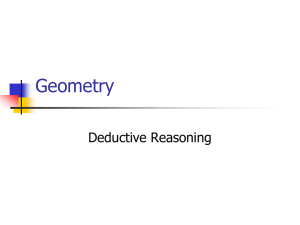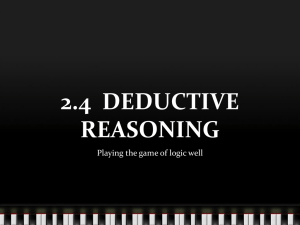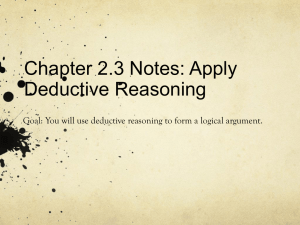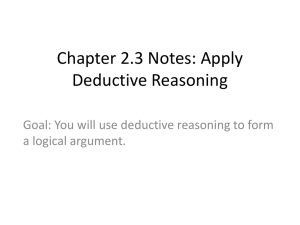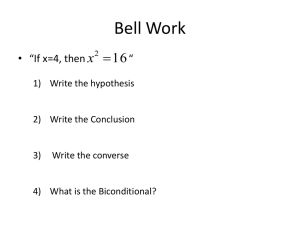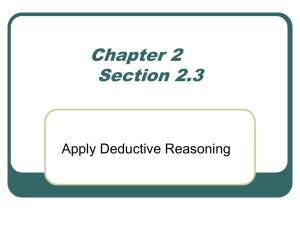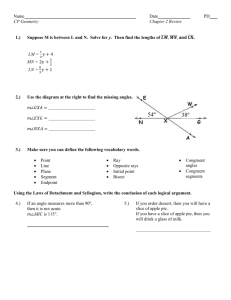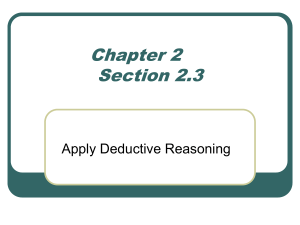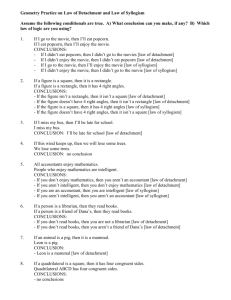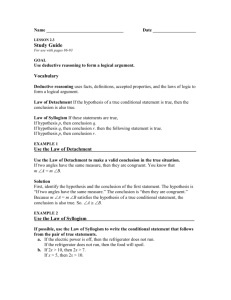Geometry
advertisement
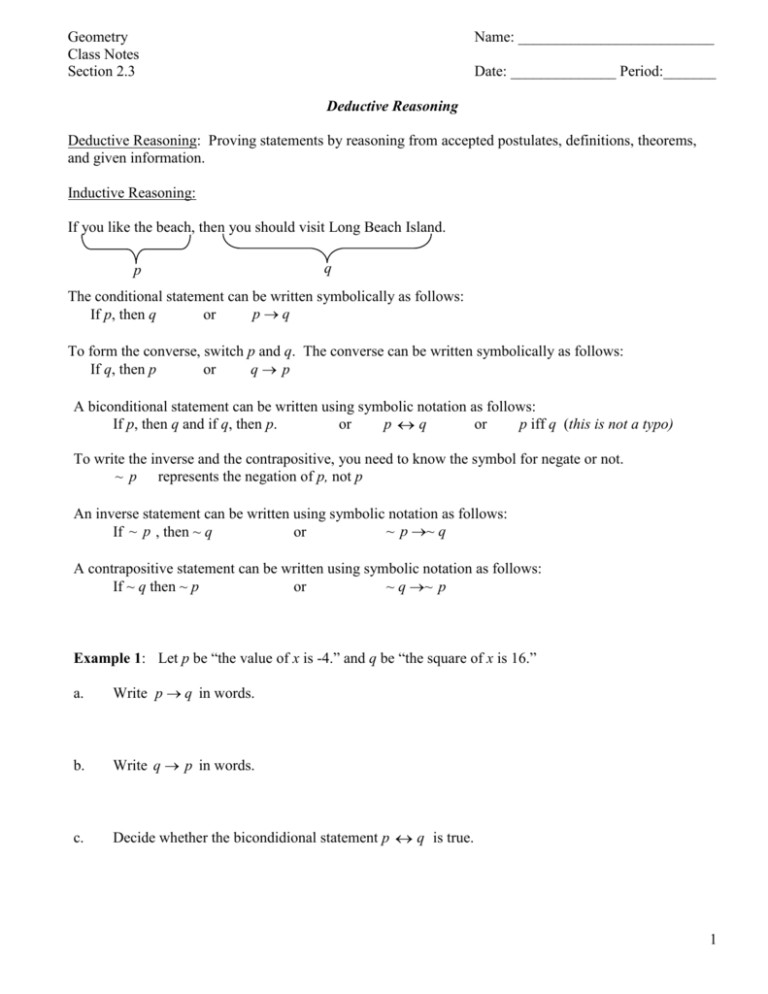
Geometry Class Notes Section 2.3 Name: __________________________ Date: ______________ Period:_______ Deductive Reasoning Deductive Reasoning: Proving statements by reasoning from accepted postulates, definitions, theorems, and given information. Inductive Reasoning: If you like the beach, then you should visit Long Beach Island. p q The conditional statement can be written symbolically as follows: pq If p, then q or To form the converse, switch p and q. The converse can be written symbolically as follows: q p If q, then p or A biconditional statement can be written using symbolic notation as follows: If p, then q and if q, then p. or p q or p iff q (this is not a typo) To write the inverse and the contrapositive, you need to know the symbol for negate or not. ~ p represents the negation of p, not p An inverse statement can be written using symbolic notation as follows: ~ p ~ q If ~ p , then ~ q or A contrapositive statement can be written using symbolic notation as follows: ~ q ~ p If ~ q then ~ p or Example 1: Let p be “the value of x is -4.” and q be “the square of x is 16.” a. Write p q in words. b. Write q p in words. c. Decide whether the bicondidional statement p q is true. 1 Example 2: Let p be “today is Monday” and q be “there is school. a. Write the contrapositive of p q in symbolic notation and then in words. b. Write the inverse of p q in symbolic notation and then in words. The Law of Detachment If p q is a true conditional statement and p is true, then q is true. The following statement is true, “If today is Thursday, then Mr. Murphy will go running.” Today is Thursday. Since it is a Thursday, you can assume Mr. Murphy will go running. Example 4: If a vehicle is a car, then it has four wheels is a true conditional. A sedan is a car. Use the Law of Detachment to reach a valid conclusion. Example 5: Determine if a valid conclusion can be reached from the two true statements, If I watch TV, I will not do my homework and I did my homework, using the Law of Detachment. If a valid conclusion is possible, state it. The Law of Syllogism If p q and q r are true conditional statements, then p r is true. The following two statements are true, “If the Eagles win, then the Cowboys stink.” “If the Cowboys stink, then I am happy.” Syllogism allows you to conclude, “If the Eagles win, then I will be happy.” **Remember in order to apply The Law of Syllogism, two true if-then statements must be given. Example 6: Determine if a valid conclusion can be reached from the two true statements, If Jamie takes the car to the store, she will stop at the post office and If Jamie stops at the post office, she will buy stamps, using the Law of Syllogism. If a valid conclusion is possible, state it. 2 TRY THESE Determine if statement (3) follows from statements (1) and (2) by the Law of Detachment or the Law of Syllogism. If it does, state which law was used. If is does not, write invalid. #1 (1) If you plan to attend the University of Notre Dame, then you need to be in the top 10% of your class. (2) Jimmy Moon plans to attend Notre Dame. (3) Jimmy Moon needs to be in the top 10% of his class. #2 (1) Vertical angles are congruent. (2) 1 2 (3) 1 and 2 are vertical. Determine if a valid conclusion can be reached from the two true statements using the Law of Detachment or the Law of Syllogism. If a valid conclusion is possible, state it and the law used. If a valid conclusion does not follow, write no conclusion. #3 (1) If the measure of an angle is between 0o and 90°, then it is acute. (2) If an angle is acute, then it is not obtuse. #4 (1) If you want good health, then you should get 8 hours of sleep each night. (2) Savannah wants good health. 3

